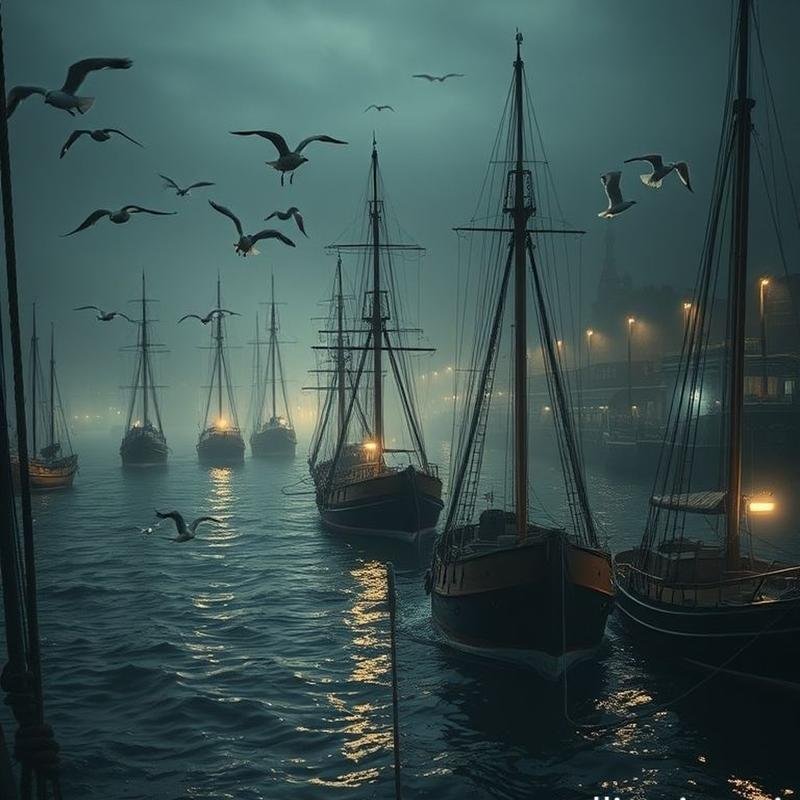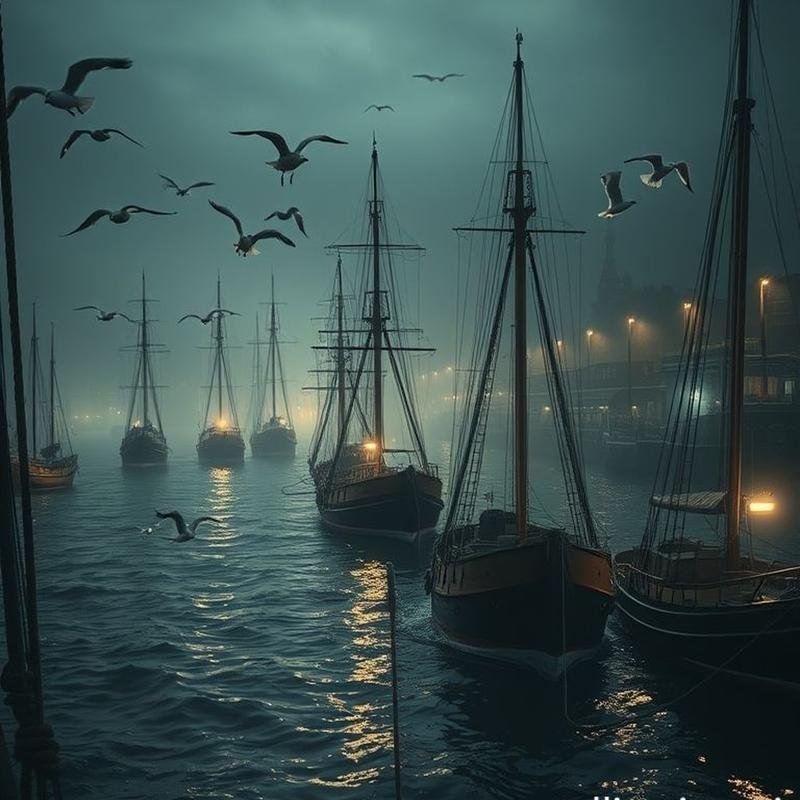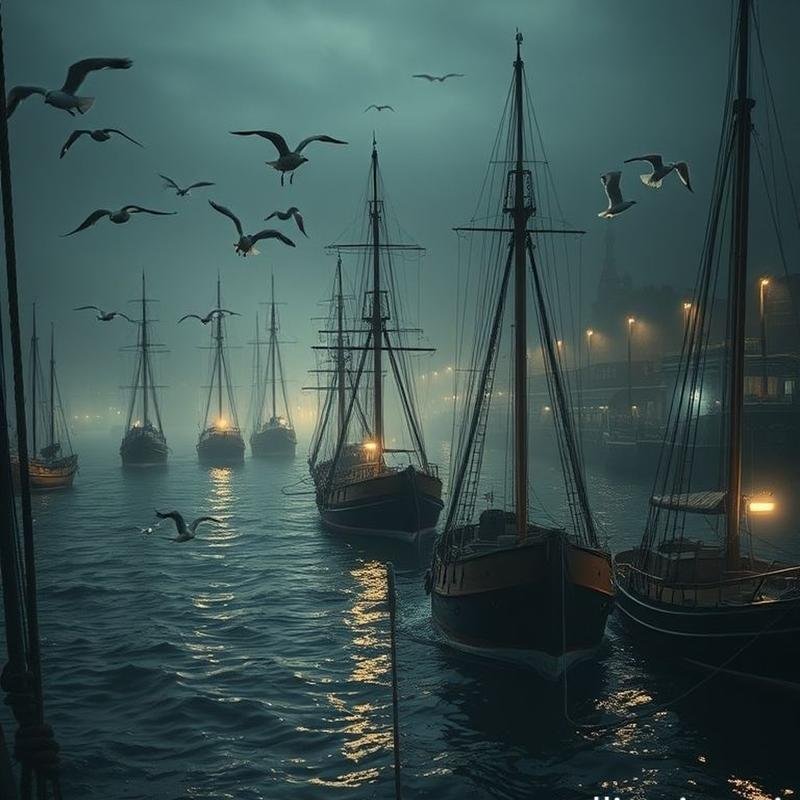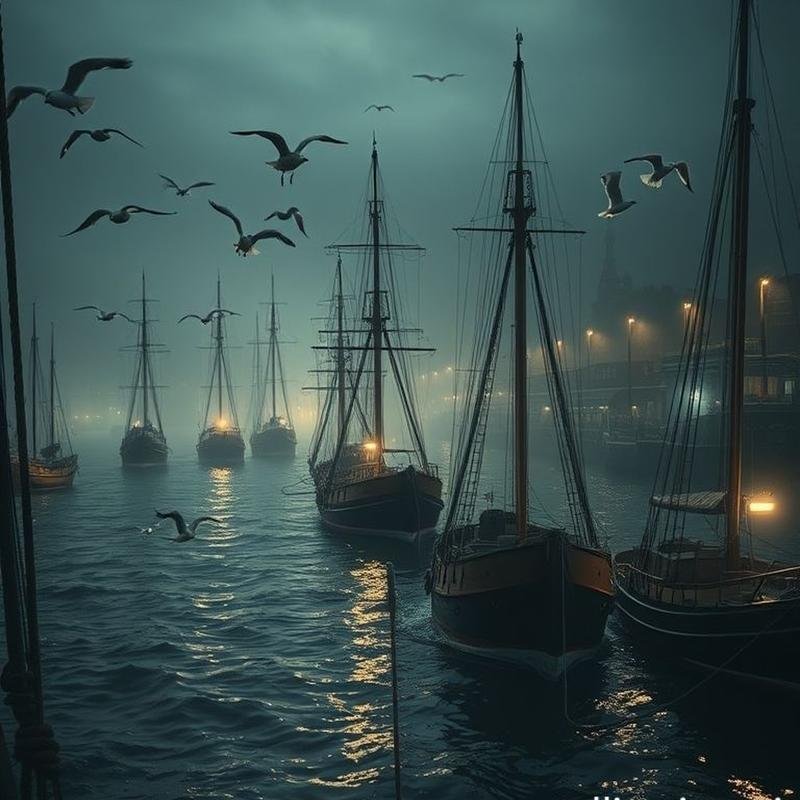Halifax 1917: A devastating explosion leveled the city, triggering a tsunami and black rain.

Halifax Explosion: The Day a City Vanished
Did you know that a single instance of human error triggered a cataclysm exceeding the destructive power of any bomb deployed in World War I? An explosion obliterated an entire city and unleashed a devastating tsunami. In this episode, we delve into the Halifax disaster of 1917, revealing how a series of tragic oversights converged to create the largest non-nuclear explosion in history. We will explore the profound and enduring scars this catastrophe left on the city and its inhabitants, a testament to the horror of that day. Before we begin to unravel the events of this horrific disaster, share your expectations regarding the contributing factors in the comments section. To ensure you follow the complete narrative, we invite you to subscribe to the channel.
Halifax: A City Forged in War
Halifax, 1917. More than just a city, it was a vital logistical hub during World War I. It served as the convergence point for soldiers and supplies originating from the American continent, destined for the perilous journey across the Atlantic to the European theater. Over three million soldiers passed through Halifax, bidding farewell to loved ones with anxious glances from the docks, embarking on journeys to uncertain fates. Under the vigilant protection of the Royal Canadian and British Navies, Halifax was a formidable fortress, a city bustling with activity and the clamor of soldiers, yet also burdened by escalating tensions. Fifty thousand residents, alongside sailors and shipbuilders, crowded the narrow streets, experiencing unprecedented economic prosperity fueled by the war effort. However, this vibrant prosperity harbored a latent danger. The harbor teemed with docked vessels, the risk of accidents lurked in every corner, and rumors circulated about spies operating in the shadows.
The Fateful Convergence
Amidst the raging conflict of World War I, as Europe suffered, Halifax thrived with a precarious vitality, a city unknowingly poised on the precipice of disaster. Two ships converged upon this bustling port, each carrying a fateful destiny. The first was the Mont-Blanc, a French cargo vessel chartered to transport an immense cargo of explosives from New York to Bordeaux, France. Its hold contained nearly three thousand tons of picric acid, TNT, and nitrocellulose – enough explosive material to obliterate a city. Conversely, there was the Imo, a Norwegian ship chartered by the Belgian Relief Commission. Its mission was humanitarian, to deliver essential supplies to war-torn Belgium. However, fate, with cruel irony, was weaving a tragic narrative.
A Collision Course
On the fateful morning of December 6, 1917, as the Mont-Blanc cautiously navigated into Halifax Harbour, the Imo was already underway, attempting to depart. A critical misunderstanding, a momentary lapse in judgment, a series of imprudent decisions – all irrevocably steered the two vessels on a collision course within the narrow channel known as The Narrows. These were the pivotal moments that would forever alter the landscape of Halifax.
The Spark of Destruction
The spark of destruction ignited. At 8:45 AM, the collision between the Imo and the Mont-Blanc was not merely a fleeting impact, but a harbinger of devastation. The moment of impact unleashed a horrific chain of events, as barrels of benzene stored on board the French vessel ruptured violently, igniting instantly. A small flame initially, it rapidly transformed into an inferno. The crew of the Mont-Blanc, experienced seamen, immediately recognized the magnitude of the impending catastrophe. Their cargo was not simply goods, but a lethal arsenal of picric acid, TNT, and nitrocellulose – sufficient material to erase an entire city from existence. Their desperate attempts to extinguish the fire proved futile, as each passing minute brought them closer to the brink.
The Unseen Horror
On the shore, and from windows overlooking the harbor, curious onlookers gathered. Their curiosity outweighed their apprehension, as the sight of the fire was unusual and captivating, yet they remained unaware of the impending horror concealed behind the flames. The billowing black smoke served as a stark warning, but its significance was lost on them. The Mont-Blanc was a ticking time bomb, and the countdown was inexorably approaching zero. Amid this terrifying scene, as the ship’s crew confronted their inevitable fate, time stood still in Halifax at 9:04:35 AM, on December 6, 1917.
Hell on Earth
Then, the unimaginable occurred. An explosion… not merely an explosion, but a manifestation of hell on earth. 2.9 kilotons of TNT, sufficient energy to obliterate everything within an 800-meter radius. An entire city was torn asunder, reduced to ashes in an instant. Absolute silence… followed by a deafening roar that shattered the stillness. An 18-meter tsunami surged across the shoreline with immense force, leaving devastation in its wake. The waters engulfed homes and businesses, transforming streets into raging torrents of destruction. Flames ascended into the sky in infernal columns, and widespread fires erupted, continuing for days, completing the mission of death and devastation. Halifax was transformed into an unbearable inferno. Over two thousand perished instantly, and more than nine thousand were injured, their bodies maimed, their souls lost… an entire city plunged into shock and bewilderment. Even over a hundred kilometers away, debris rained down like ominous black rain, a terrifying testament to the immense power of destruction.
Tales of Tragedy and Survival
Amid the chaos, amidst the scattered wreckage, tales of human tragedy unfolded – stories of survival etched in suffering. Vincent Coleman, the railway dispatcher whose desperate warning echoed throughout the city, miraculously survived, his wounds a stark and lasting reminder of the day everything changed. Barbara Orr, the young girl whose vision was stolen by flying shards of glass, became a poignant symbol of the innocent children caught in the nightmare of Halifax. Her heartbreaking story embodied the tragedy that befell a generation, a future shattered in an instant. John Connors, a sailor aboard the Imo, witnessed the inferno firsthand. His account, recounted in hushed tones, transports us to the heart of the disaster, where death and destruction reigned supreme. Conversely, Helen MacLean, a nurse who dedicated herself to saving lives in the overcrowded hospitals, worked tirelessly, overcoming the torment and chaos, a beacon of hope in a world consumed by despair. The black rain that fell in the aftermath, a morbid mixture of smoke, ash, and oil, was more than just a weather phenomenon. It was the physical embodiment of the disaster, a toxic addition to the city’s already grievous wounds. Every drop served as a chilling reminder of the day Halifax was plunged into hell.
A City Rises from the Ashes
The black rain was only the beginning of a new chapter of suffering, but amidst the rubble and despair, glimmers of hope emerged. Within hours, relief convoys poured in from neighboring Nova Scotia towns, Truro and Amherst, bringing doctors, nurses, and medical supplies, the first line of defense in the face of the Halifax inferno. From afar, Boston crossed state lines, offering not only $750,000, equivalent to $15 million today, but a complete medical team and a field hospital, a poignant symbol of solidarity in the face of disaster. Relief trains, arriving from all corners of Canada and the United States, loaded with food, clothing, medicine, and rebuilding materials, were new lifelines pulsing with strength into the body of the stricken city. The Halifax Relief Commission, established in the wake of the chaos, assumed the responsibility of organizing efforts and distributing resources, working in collaboration with the Canadian Red Cross. The snowstorm that struck one day after the explosion did not deter the determination of volunteers and workers, who labored day and night to find survivors and provide assistance. Women played a crucial role, preparing food with compassion, providing warm shelter, and caring for the wounded and orphaned with utmost dedication. Temporary orphanages, safe havens for children who had lost everything, were established, where volunteers sought to provide psychological and emotional support, attempting to heal their profound wounds.
Justice Denied
Leaving behind lost hope, and shattered lives. But even in the midst of this horrific tragedy, questions began to surface, demanding satisfactory answers, absent justice. Official investigations, led by Justice Arthur Drysdale, promptly assigned responsibility, pointing to the captain of the Mont-Blanc, the ill-fated French vessel loaded with explosives, and the negligent port dispatcher. Gross negligence, was the term used to describe the disaster, a blind negligence that led to this unprecedented massacre. But the bitter irony, which further exacerbated the pain, lies in the fact that justice was not served, but was stifled. Despite the explicit criminal charges, the accused were later acquitted, igniting public outrage that spread rapidly, a resounding cry that shook the foundations of the city, demanding accountability, fair retribution.
Lessons Learned, Lessons Forgotten?
But the disaster, despite its horror, did not pass without leaving its mark. New regulations, stricter than ever before, were implemented to govern ship traffic in Halifax Harbour, with a particular emphasis on the handling of highly dangerous explosive materials. The Halifax Relief Fund raised millions of dollars in donations, in a desperate attempt to heal the deep wounds and provide the necessary support to those affected. However, the painful question remains: have we truly learned the lesson? The Texas City explosion of 1947, which claimed the lives of hundreds, serves as a reminder that industrial disasters, however horrific, can recur if the lessons learned are not heeded.
Halifax Today: A Living Memory
Halifax today, a living memory that endures. In the heart of the vibrant city, the bell of St. Paul’s Church still rings, not in celebration, but as a poignant reminder. At 9:06 AM every December 6th, it echoes throughout the city, an echo of the explosion that shook its foundations. On a hill overlooking the narrow waterway, where the two ill-fated ships collided, stands the Memorial Park. A tranquil haven, but one that carries within it the echoes of the painful past. A permanent memorial,







